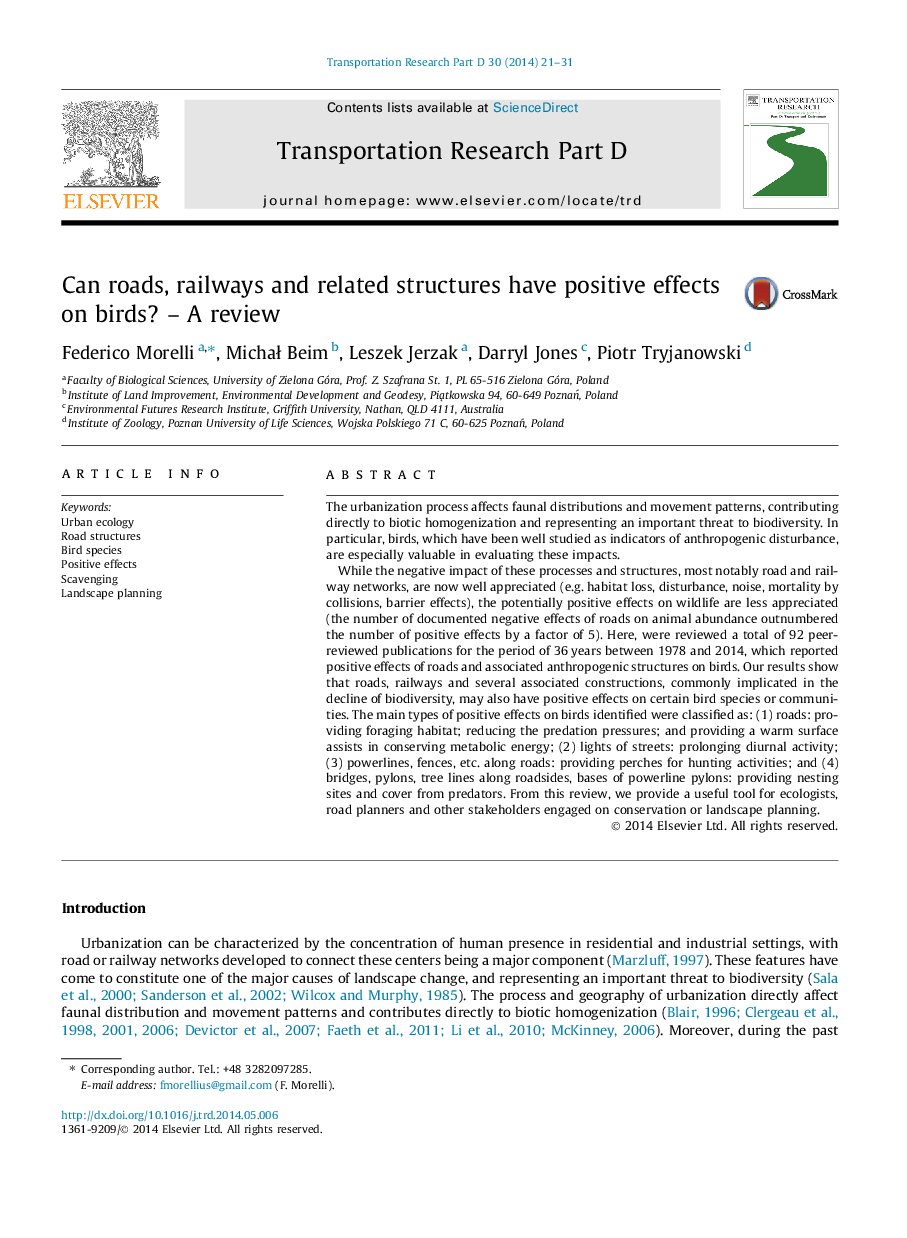| کد مقاله | کد نشریه | سال انتشار | مقاله انگلیسی | نسخه تمام متن |
|---|---|---|---|---|
| 1065712 | 1485893 | 2014 | 11 صفحه PDF | دانلود رایگان |

• Negative effects of urbanization process on wildlife are well known.
• We reviewed scientific articles looking for positive effects of roads and railways on birds.
• Roads can provide foraging or scavenging habitat and warm surface for many bird species.
• Bridges, powerlines, signboards, etc. can provide perches for hunting and nesting sites.
• Our results constitute an useful tool for ecologists, road planners and other stakeholders.
The urbanization process affects faunal distributions and movement patterns, contributing directly to biotic homogenization and representing an important threat to biodiversity. In particular, birds, which have been well studied as indicators of anthropogenic disturbance, are especially valuable in evaluating these impacts.While the negative impact of these processes and structures, most notably road and railway networks, are now well appreciated (e.g. habitat loss, disturbance, noise, mortality by collisions, barrier effects), the potentially positive effects on wildlife are less appreciated (the number of documented negative effects of roads on animal abundance outnumbered the number of positive effects by a factor of 5). Here, were reviewed a total of 92 peer-reviewed publications for the period of 36 years between 1978 and 2014, which reported positive effects of roads and associated anthropogenic structures on birds. Our results show that roads, railways and several associated constructions, commonly implicated in the decline of biodiversity, may also have positive effects on certain bird species or communities. The main types of positive effects on birds identified were classified as: (1) roads: providing foraging habitat; reducing the predation pressures; and providing a warm surface assists in conserving metabolic energy; (2) lights of streets: prolonging diurnal activity; (3) powerlines, fences, etc. along roads: providing perches for hunting activities; and (4) bridges, pylons, tree lines along roadsides, bases of powerline pylons: providing nesting sites and cover from predators. From this review, we provide a useful tool for ecologists, road planners and other stakeholders engaged on conservation or landscape planning.
Journal: Transportation Research Part D: Transport and Environment - Volume 30, July 2014, Pages 21–31